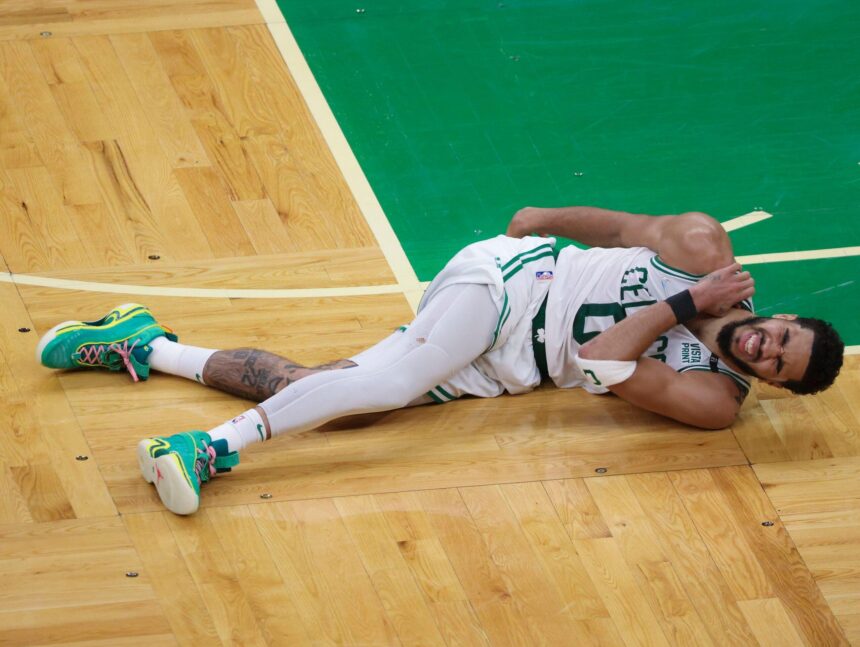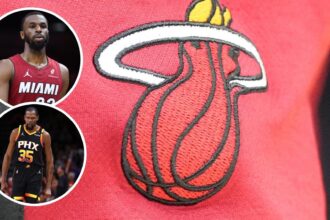The Boston Celtics entered the offseason facing significant challenges in the wake of Jayson Tatum’s injury, which has cast uncertainty over the team’s future plans. With the star forward sidelined, the Celtics’ front office is navigating a complicated path as they prepare for the upcoming season. Celtics president Brad Stevens acknowledged that “hard decisions” were on the horizon regardless, signaling a period of difficult choices and strategic adjustments ahead. This article examines how Tatum’s injury has influenced Boston’s offseason moves and what lies ahead for the struggling franchise.
Jayson Tatum Injury Forces Celtics to Reassess Offseason Priorities
The unexpected setback to Jayson Tatum’s health has compelled the Boston Celtics to take a hard look at their offseason strategy. Head coach Brad Stevens acknowledged that while challenging decisions were already on the horizon, Tatum’s injury has accelerated the timeline for evaluating roster moves and draft priorities. With the All-Star forward sidelined, the Celtics must now explore depth options, adjust their salary cap approach, and potentially pivot their trade market tactics to stabilize the team’s championship aspirations.
Key areas Boston is reconsidering include:
- Backup scoring options – Identifying reliable players who can shoulder the offensive load in Tatum’s absence.
- Defensive reinforcement – Bolstering perimeter defense to compensate for the loss of Tatum’s two-way impact.
- Financial flexibility – Reassessing contract commitments to create cap space for midseason acquisitions.
- Draft strategy – Potentially targeting more NBA-ready talent to step into a playoff-ready role.
| Priority | Focus | Impact |
|---|---|---|
| Roster Depth | Wing Scorers | Maintain offensive firepower |
| Cap Management | Player Contracts | Maximize flexibility for trades |
| Draft Approach | Ready-Made Talent | Immediate contributor in rotation |
Brad Stevens Acknowledges Challenges but Emphasizes Long-Term Team Strategy
Brad Stevens candidly acknowledged the Celtics faced an arduous offseason, intensified by Jayson Tatum’s injury, but underscored that strategic tough calls were inevitable regardless. According to Stevens, the front office was already preparing to make difficult decisions to reshape the team’s core and enhance long-term competitiveness. The injury, while unfortunate, accelerated conversations about roster flexibility and the need to balance immediate aspirations with sustainable growth.
Stevens highlighted several priority areas moving forward:
- Evaluating young talent to identify key contributors for the future.
- Salary cap management to maintain financial agility for potential midseason acquisitions.
- Strengthening the supporting cast around star players to ensure depth and resilience.
| Key Offseason Focus | Objective |
|---|---|
| Youth Development | Identify emerging leaders |
| Financial Flexibility | Enable future acquisitions |
| Roster Depth | Build a reliable bench |
Expert Recommendations for Celtics Navigating Roster Moves Post-Tatum Setback
While Jayson Tatum’s injury has undeniably shifted the Celtics’ offseason blueprint, experts emphasize that Boston was already facing pivotal decisions regarding roster composition and future cap flexibility. With Tatum sidelined, the front office must balance maintaining their competitive core with exploring new avenues for depth, especially in perimeter scoring and wing defense. Analysts suggest the Celtics prioritize agility in trade talks to address immediate needs without compromising the team’s long-term vision.
Among the recommended strategies are:
- Targeting versatile defenders through mid-level trades or free agency to shore up wings capable of guarding multiple positions.
- Leveraging young assets in potential swaps to expedite the infusion of ready talent around the core.
- Preserving salary cap space to remain flexible for mid-season acquisitions, especially if Tatum’s return timeline shifts.
| Priority Area | Reason | Potential Outcome |
|---|---|---|
| Wing Defender Acquisition | Compensate for defensive gaps with Tatum out | Stronger perimeter defense |
| Asset Utilization | Leverage future picks and young players | Immediate roster depth |
| Cap Management | Maintain financial flexibility | Quick adjustments mid-season |
Wrapping Up
As the Boston Celtics navigate the aftermath of Jayson Tatum’s injury, the team faces a challenging offseason marked by pivotal decisions. While the setback has undoubtedly influenced their plans, Head Coach Brad Stevens emphasizes that difficult choices were on the horizon regardless. Moving forward, the Celtics must balance immediate recovery needs with long-term roster strategy as they prepare to remain competitive in the upcoming season.













